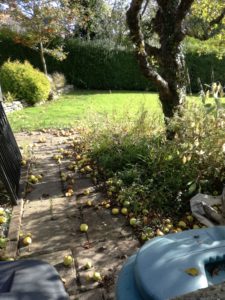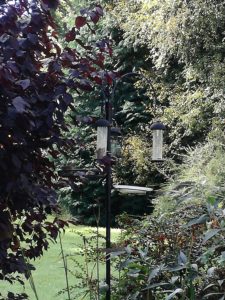Keeping yourself rat free this winter
Well summer had to end eventually and I had to scrape the frost off my van windscreen this morning so what better time to talk about winter rat problems.
Its been a bumper year for insect pests with the hot dry days providing ideal conditions for them to thrive. But its not just insects that have loved the summer. Rats have had a good year too with good conditions allowing more rat offspring to survive, raising the base population level.
However, all good things must come to an end and as food availability declines and days get colder all those rats are going to need shelter, and your house could be as good a place as any. So what can you do to ensure you stay rat free this winter?
There has been a bumper fruit crop this year and sometimes the fruit is left to go to waste. Below is a prime example of an apple tree heavy laden with fruit that has been allowed to fall to the ground and left to rot. This is a food source for rats and could prompt rats to set up shop in the garden. You should remove any unused fruit to remove the potential food source.

Apples left on the ground to rot
Its not just rats that run short of food in the winter. Birds suffer too and people love to give them a hand by feeding them. Good on you. We should help our birds survive the winter but not at the cost of allowing rats to set up shop in our gardens.

Its not just birds that can use this feeder
Bird feeders should be sited away from trees and bushes and a baffle of some sort or other should be fitted to the upright pole. This will stop rats climbing up to the bird feeders. They especially love fat balls due to the high energy content. Birds are also messy feeders and any spill of seed from the feeders should be caught or cleared up, otherwise you will find rats feeding around the base of the bird feeder.
If you can remove food sources from outside your home, rats are much less likely to frequent your garden. If they aren’t in your garden they wont find their way into your homes…. Unless they’re coming from the drains, but that’s for another time.

